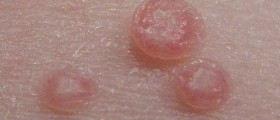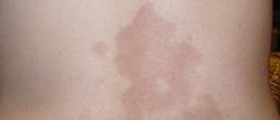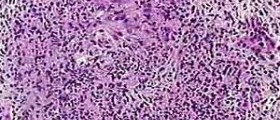
Giant cell tumors may be localized or diffuse. Diffuse type is rare and usually affects the legs, causing lesions around the knee, ankle and foot and the hands in some cases. Giant cell tumors of the tendon sheath are localized form of these tumors and patients might have them for a long period of time. The masses commonly do not cause any pain and in some patients tumors exist for 30 years, causing nothing more than distal numbness or impaired function of the digit.
What Causes Giant Cell Tumors?
As many other soft tissue tumors, doctors cannot pinpoint the exact cause of this condition. So far, all they know is that giant cell tumors may be associated with some trauma, infections, inflammation, neoplasia, metabolic problems, disturbed lipid metabolism, immune mechanisms, proliferation of osteoclasts or some vascular disturbances. In the lesions researchers found cells resembling osteoclasts, which may indicate a link between the bone marrow and the tumors. Most doctors agree on the theory that the reason behind these giant cell tumors is some inflammatory process and reactive or regenerative hyperplasia (excessive multiplication of cells).
Giant cell tumors are found to be associated with degenerative joint disease, especially in distal inter-phalangeal (between the finger or toe bones) joints. There is no real connection with rheumatoid arthritis although these two conditions may occur at the same time coincidentally.
Who Can Develop These Tumors?
Ganglion cysts and giant cell tumors are two of the most commonly found tumors in the hand. Patients are usually adults, from 30 to 50 years of age, but in rare cases the same tumors may affect children younger than 10 years or elderly people (over 60 years of age). Women are slightly more likely to develop giant cell tumors than men.
Therapy for Giant Cell Tumors
The treatment of choice for giant cell tumors is usually surgical procedure of marginal excision with meticulous dissection and exploration, because of the frequently found satellite lesions. The mass is commonly associated with the tendon sheath or synovial joint, making the complete excision problematic. Patients may also need to have partial excision of the tendon sheath or the joint capsule, in order to remove giant cell tumor completely.
Patients suffering from arthritis might need debridement or fusion, along the marginal excisions, while the tumors which affect the skin may lead to elliptical skin excision and also some skin grafting afterwards.
Recurrence is seen quite often after these procedures and it can be expected in 9 to 44% of all patients treated for giant cell tumors, especially in patients with degenerative joint disease, osseous pressure erosions or injuries to interphalangeal joint of the thumb or distal interphalangeal joint of some other finger.

















Your thoughts on this
Loading...